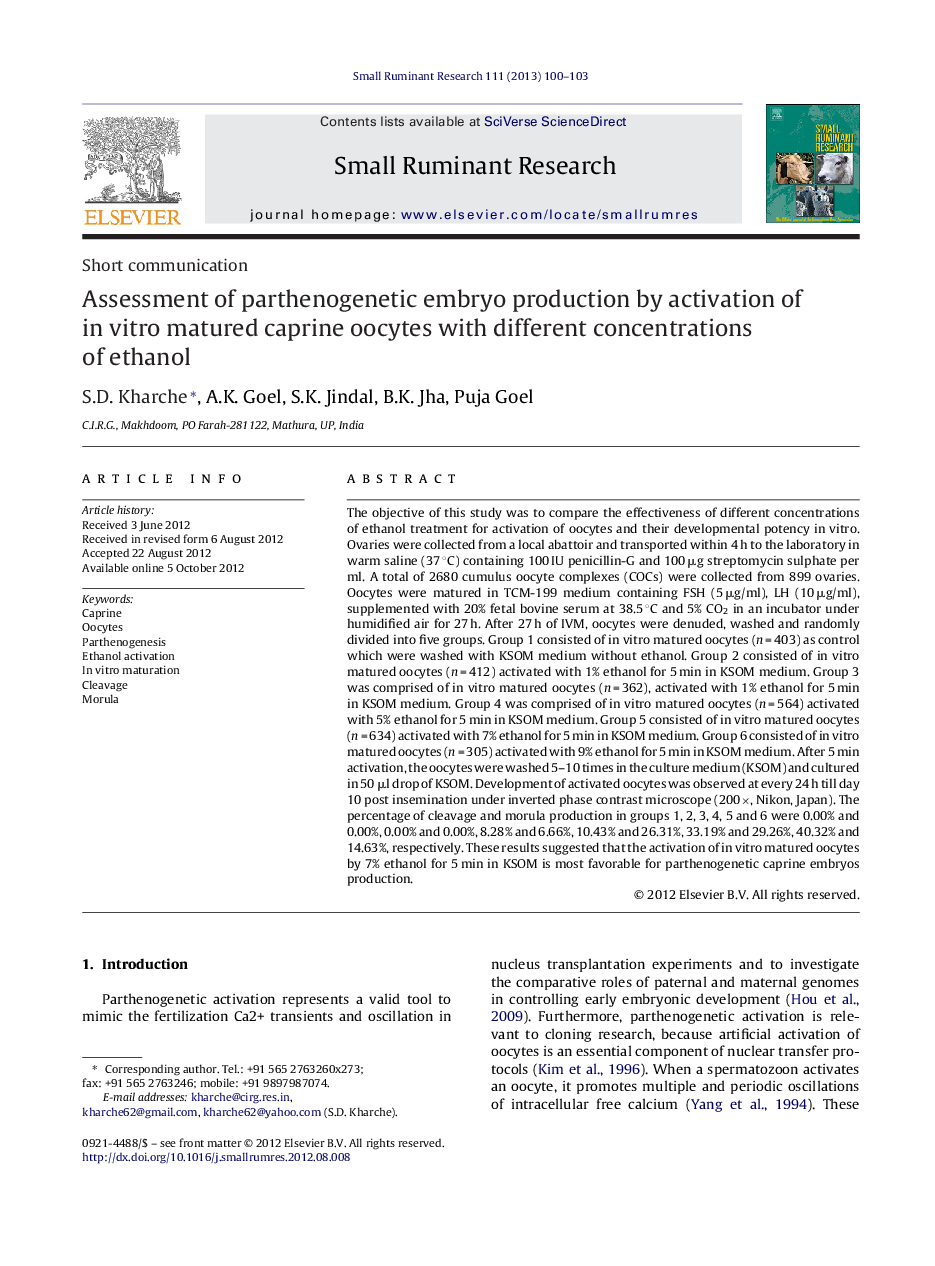| Article ID | Journal | Published Year | Pages | File Type |
|---|---|---|---|---|
| 5795865 | Small Ruminant Research | 2013 | 4 Pages |
The objective of this study was to compare the effectiveness of different concentrations of ethanol treatment for activation of oocytes and their developmental potency in vitro. Ovaries were collected from a local abattoir and transported within 4 h to the laboratory in warm saline (37 °C) containing 100 IU penicillin-G and 100 μg streptomycin sulphate per ml. A total of 2680 cumulus oocyte complexes (COCs) were collected from 899 ovaries. Oocytes were matured in TCM-199 medium containing FSH (5 μg/ml), LH (10 μg/ml), supplemented with 20% fetal bovine serum at 38.5 °C and 5% CO2 in an incubator under humidified air for 27 h. After 27 h of IVM, oocytes were denuded, washed and randomly divided into five groups. Group 1 consisted of in vitro matured oocytes (n = 403) as control which were washed with KSOM medium without ethanol. Group 2 consisted of in vitro matured oocytes (n = 412) activated with 1% ethanol for 5 min in KSOM medium. Group 3 was comprised of in vitro matured oocytes (n = 362), activated with 1% ethanol for 5 min in KSOM medium. Group 4 was comprised of in vitro matured oocytes (n = 564) activated with 5% ethanol for 5 min in KSOM medium. Group 5 consisted of in vitro matured oocytes (n = 634) activated with 7% ethanol for 5 min in KSOM medium. Group 6 consisted of in vitro matured oocytes (n = 305) activated with 9% ethanol for 5 min in KSOM medium. After 5 min activation, the oocytes were washed 5-10 times in the culture medium (KSOM) and cultured in 50 μl drop of KSOM. Development of activated oocytes was observed at every 24 h till day 10 post insemination under inverted phase contrast microscope (200Ã, Nikon, Japan). The percentage of cleavage and morula production in groups 1, 2, 3, 4, 5 and 6 were 0.00% and 0.00%, 0.00% and 0.00%, 8.28% and 6.66%, 10.43% and 26.31%, 33.19% and 29.26%, 40.32% and 14.63%, respectively. These results suggested that the activation of in vitro matured oocytes by 7% ethanol for 5 min in KSOM is most favorable for parthenogenetic caprine embryos production.
